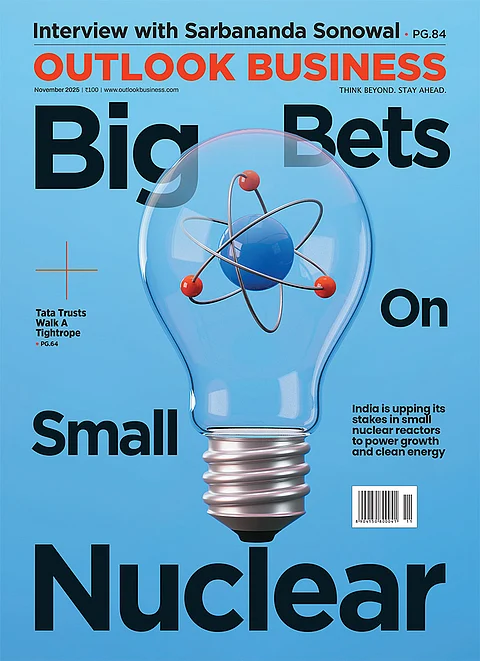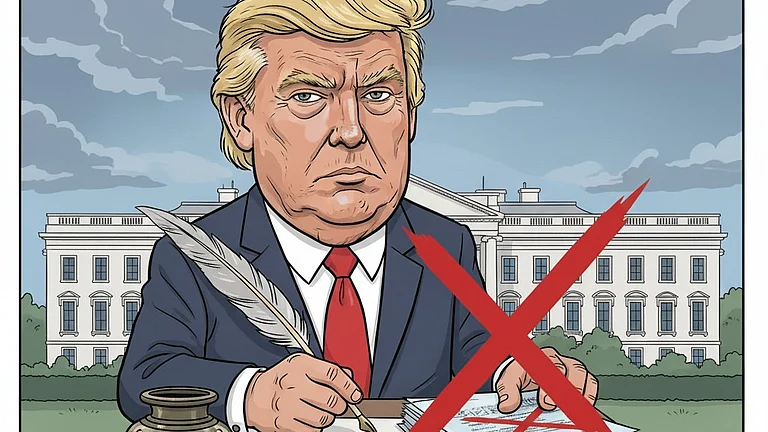In the evolving landscape of leadership thinking, two recent works stand out for their clarity and complementarity: Anil K. Singhal’s recent book, The 5% Rule of Leadership: Using Lean Decision-Making to Drive Trust, Ownership and Team Productivity (HarperCollins, 2024), and Nitin Nohria and Anthony Mayo’s Harvard Business Review article, As the World Shifts, So Should Leaders (HBR, March–April 2024).
They approach leadership from different vantage points, yet converge on a single principle: The true test of leadership lies not in reaction, but in readiness. In this review, I read these two frameworks side by side—Singhal’s lean decision-making model and Nohria–Mayo’s contextual intelligence theory—to explore how they together form a coherent philosophy for leading with purpose, clarity and moral steadiness in a volatile world.
Readiness Before Reaction
Singhal’s work offers a refreshing antidote to reactive management. Blending lean decision-making with moral clarity, it shows that the smartest leaders invest effort early in trust, transparency and alignment, so that the rest unfolds with quiet precision.
In As the World Shifts, So Should Leaders, Nitin Nohria and Anthony Mayo argue that the true test of leadership today lies not in fixed traits but in contextual intelligence—the ability to sense change, interpret faint signals and adapt with proportionate action. According to them, great leaders distinguish noise from meaning and prepare their organisations before uncertainty strikes.
If Nohria and Mayo explore how leaders must react wisely, Singhal focuses on how leaders must decide wisely—and, just as crucially, how they can build systems of trust that make such wise decisions possible. Together, the two frameworks form a coherent philosophy for leading in an age of volatility.
The Essence of the 5% Rule
At the heart of Singhal’s book is a deceptively simple principle: The first 5% of effort determines 95% of the outcome. This is when purpose is defined, values are clarified and expectations aligned. This is lean decision-making applied to leadership. Rather than chasing speed or perpetual firefighting, Singhal urges leaders to slow down at the start to front-load clarity, so that execution can move faster and cleaner later.
Alignment Before Action
Singhal opens by noting that most organisational failures stem not from poor execution but from poor definition. Teams rush into projects without shared clarity about the problem or the purpose. The 5% rule insists that this initial framing, the front porch of leadership, must be deliberate, transparent and value-driven. Here again, Nohria and Mayo’s article resonates. They argue that the best leaders cultivate contextual curiosity, a willingness to ask what’s truly important, before deciding what to do. Singhal operationalises this curiosity into a process: Decide first what matters most, then act decisively. The result is a company whose momentum is purposeful, not frantic.
The Virtuous Spiral
In one of the book’s most memorable sections, Singhal describes a virtuous spiral linking employees, customers and shareholders. Excited employees create satisfied customers, who in turn create happy shareholders. He inverts traditional corporate logic: Enthusiasm and trust are not by-products of profit—they are its source. Nohria’s research supports this cultural equation. In his leadership studies at Harvard, he repeatedly finds that trust and clarity outperform incentives and fear as drivers of long-term success. Singhal’s 5% framework builds exactly that, clarity that breeds ownership, and ownership that breeds energy.
Trust: The Ultimate Empowerment
Trust, Singhal writes, is the cleanest form of empowerment. Once purpose and expectations are clear, the leader’s task is to let go. Micromanagement, he observes, is not a personality flaw but a failure of design which proves that the early 5% of alignment was skipped. Nohria and Mayo describe this same principle from the other side: In uncertain environments, trust becomes a form of institutional resilience. Teams that trust leadership move faster because they don’t pause to seek reassurance. In Singhal’s language, the investment of trust made in the first 5% yields exponential returns when pressure mounts.
Transparency and Front-Loading
Two of Singhal’s most practical ideas—transparency and front-loading—turn abstract trust into tangible behaviour. Transparency, for him, is not about oversharing; it’s about making the logic of decisions visible. People can accept tough calls when they understand the reasoning behind them. Front-loading is his discipline of readiness: anticipating issues before they erupt, building alignment before contracts are signed and ensuring that every stakeholder understands the “why” as much as the “what.” It is the managerial embodiment of Nohria’s “sense-before-react” mindset. Singhal shows, through examples from NetScout and beyond, that the calmest leaders are those who do their sweating early.
Problem Solver, Not Solution Provider
Perhaps the most subtle insight in The 5% Rule is Singhal’s distinction between a problem solver and a solution provider. Leaders who rush to solutions rob teams of ownership; those who frame problems precisely empower teams to innovate. Nohria and Mayo echo this when they note that today’s complex environment demands distributed judgment, not centralised decision-making. Singhal’s model provides the structural basis for that—once the problem is well-framed in the 5% phase, the remaining 95% can be executed by empowered teams.
It is a shift from control to coaching, from command to clarity.
Hierarchy of Purpose: Values as Architecture
Singhal concludes by articulating what he calls the hierarchy of purpose, with values at the top, priorities next and actions at the base. Without this moral structure, lean decision-making can devolve into mere efficiency. Values ensure that speed never outruns integrity. Here, he aligns seamlessly with Nohria’s view of leadership as stewardship. The leanest organisations, Nohria and Mayo write, are those where values do the heavy lifting of control. Singhal’s 5% principle gives that insight an operational form—as early design.
Nohria and Mayo’s argument complements this perfectly. Their contextual intelligence relies on early sense-making, a process remarkably similar to Singhal’s disciplined 5%. Both stress that leadership begins not in motion, but in mindful stillness.
The Two Frameworks Together
Seen together, these two thinkers describe the full arc of 21st-century leadership:
• Singhal’s 5% rule teaches leaders how to prepare—to define purpose, build trust, front-load understanding and clarify values.
• Nohria and Mayo’s contextual intelligence teaches leaders how to adapt—to sense change, interpret signals and respond wisely.
Preparation without adaptability is rigidity; adaptability without preparation is chaos. Together, they offer a simple but profound formula: prepare deeply, act wisely.
Singhal’s The 5% Rule of Leadership is a quietly transformative book. Its power lies not in management jargon but in moral geometry: get the first 5% right and the remaining 95% finds its shape naturally. In harmony with Nohria and Mayo’s insight that leadership must evolve with shifting contexts, Singhal offers the pre-emptive discipline that makes such evolution possible. Nohria teaches us how to sense; Singhal teaches us how to decide.
In an age obsessed with speed, both remind us that leadership begins not in movement but in mindful preparation—the discipline before the storm.
Sanjay Kaul is a professor of energy management at the School of Business and Technology at Fitchburg State University and writes on leadership, energy management and policy.
























